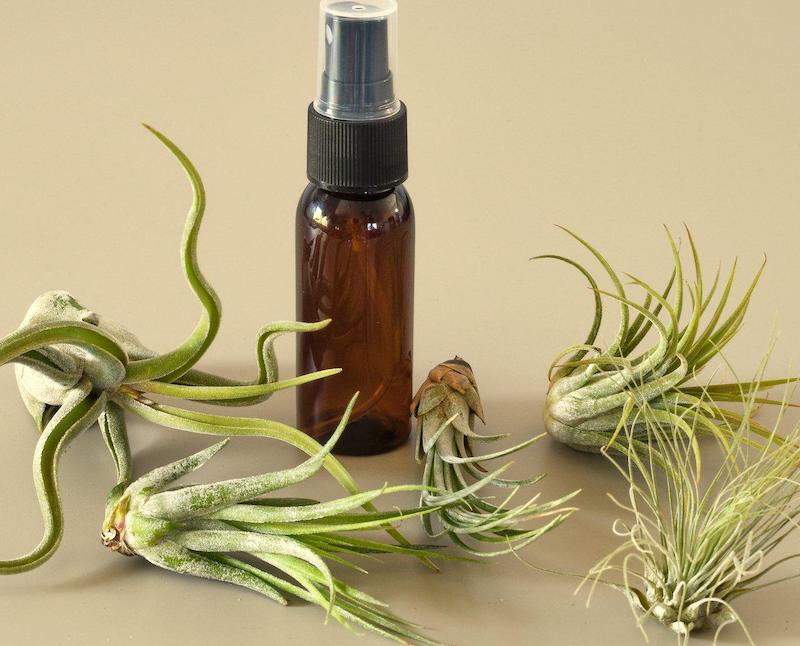Air Plants need more than just air to survive. Their leaves extract nutrients and moisture from the air in their native habitats. Some Tillandsias come from desert habitats where they only receive sporadic moisture. The thick fleshy leaves have adapted to store moisture for long periods. Desert types are usually silver colored. Other types come from jungle climates that are very warm and always humid. These Air Plants have finer leaves and are used to consistent temperatures and moisture that rarely change throughout the year. With only a few techniques, Air Plants can easily be treated to their preferred habitats indoors.

How To Tell If Air Plants Need Water
The thick leaves of Air Plant will give you important clues to its health and watering needs. Leaves that have brown on the edges or tip and curl in will need a thorough watering as soon as possible. Leaves that look like they are sweating with beads of moisture, and feel less rigid or mushy indicate overwatering or a lack of good air circulation for Air Plants. If any parts of the plant have turned black, that indicates rot, which the plant most likely will not recover from.
Air Plants use moisture differently depending on the conditions they are living in. Warmer spots that have low or little humidity will dry these epiphytes out faster than a cooler, low-light situation. On average, Air Plants will need to be watered once every 7-10 days year-round. A misting with filtered or rain water every 2-3 days will increase humidity levels around the plant.
How To Water Air Plants
Watering Air Plants is easy but done differently than watering the average houseplant. Only use only non-chlorinated water, such as filtered tap or rain water, that is at room temperature. Cold or hot water will shock the plant and cause stress. Fill a sink or small bowl large enough for the Air Plant to soak in. Submerge the plant fully for up to 15 minutes. After the time is up, remove the Air Plant carefully and place it upside down on a towel to let excess water drain. Drain the plant for 1-3 hours and then transfer it into its display area.
The goal of watering by submersion is to allow the fine hairs on the leaves to absorb as much moisture as possible in one session. Misting the plants for humidity does not count as watering and is not intended to get the plants wet, but to humidify the surrounding air so that the Air Plants retain moisture longer.
Air Plants Watering Tips
- Water once every 7-10 days
- Fully submerge the plant in room-temperature, filtered water
- Allow the plant to drain excess water before repositioning it for display
- Overwatering will kill Air Plants as easily as underwatering
- Mist Air Plants every 2-3 days to increase humidity around the plant
 |
Author Robbin Small - Published 3-21-2023 |

